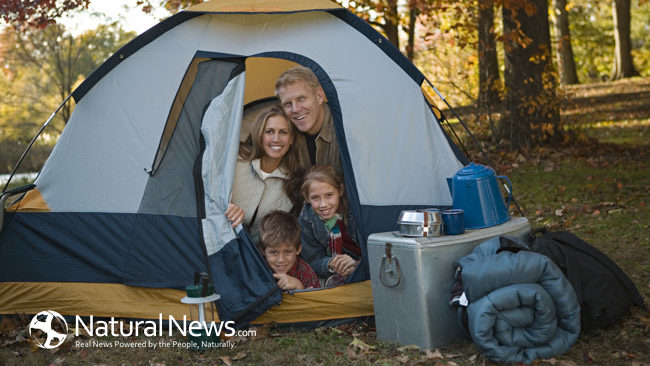As the nights draw in and grow colder and you begin to settle into holiday mode, you’re unlikely to entertain the idea of setting off on a camping trip. Camping’s supposed to be a relaxing, comfortable affair; with meadows and blue skies and whatnot. Well, sorry to break it to you, but you’re a wuss, and UK camping and leisure company Salop is going to show you what real camping means.
Cliff Face Camping
No need to worry about water seeping under your groundsheet here, this gentleman’s almost 1000m up Northern Canada’s 1617m Great Sail Peak.
Brave (or foolhardy) rock climbers attach this hanging tent, or portaledge if you want to use the right lingo, to the rock-face and just hang-out (sorry, bad pun).
Seriously though, this marvel of engineering allows climbers a relatively good night’s sleep whilst completing some of the world’s longest, most dangerous climbs. It is still, mind you, incredibly dangerous, and even with a rain fly to protect from the harsh weather conditions, if the harnesses were to fail, a grizzly fate would await the adventurer.
Extreme Winter Camping
“Ooh, it’s too cold for camping at this time of year”, you say, “Poppycock!” says the (presumably moustachioed) extreme winter camper “there’s not even a chance of frostbite.”
Extreme winter campers truly do love the cold. In a similar tradition to ice swimming, those who love to camp in the cold cite health benefits and a boost to the immune system as the reason they keep coming back for more.
There are risks involved though, frostbite and hypothermia are common ailments when winter camping, and even seasoned veterans can succumb to. Some of the less common dangers include trench foot, chilblains, corneal freezing (frozen eyes…) and a scarily high risk of heart failure, especially in those who are already vulnerable. This is particularly interesting, as both ice swimming and extreme winter camping are popular with the over 50’s.
Treetop camping
Despite not being quite as “extreme” as the other types of camping we have mentioned on this list, if you are in a situation where you need to be treetop camping, then chances are it is because of a high level of danger on the ground. Amazon explorers often take to the treetops when getting their head down to avoid being gobbled up by wildlife in the night.
What makes this so different to cliff face camping, besides the cliff, is that this is actually far more dangerous. This added level of danger is due to the fact that cliff face campers are attached to the cliff at multiple points, if one part of the cliff rock gives way then there are other safety lines to catch the rudely awoken climbers. Treetop campers however, put all of their faith in one single branch.
Desert Camping
For the adventurous camper who enjoys the peace and serenity that camping can bring, there really isn’t a better choice than the desert. However, desert camping is one of the most dangerous forms of outside adventure that one could chose to embark on.
This added danger comes from the extreme isolation of most desert environments, and the need for extra provisions including almost twice as much water as campers would usually plan on carrying. Experts recommend at least a gallon of water a day, which weighs 8.34 pounds. For 2 people on a 7 day camp out, the water weight alone could reach over eight stone. Another danger is the lack of traditional landmarks. This makes orienteering very difficult for the inexperienced. To brush up on your desert map skills, check out this guide.
With great risk comes great reward though, and desert campers can experience some of the most breath-taking and hauntingly lonely sites in the world including The Grand Canyon, The Red Centre and Death Valley.
Urban Camping
Urban camping might seem to be a little bit cushy compared to others on this list, after all, survival isn’t exactly an issue if you are a stone’s throw from a convenience store. What adds the thrill of danger in this scenario is outside intervention. A tent popping up in the middle of an urban centre is likely to attract attention and late at night this attention is likely to come from a modern city’s more unsavoury characters. From full-time street sleepers who might want to shack up with you for the night, to those who might see your temporary pitch as an easy opportunity to relieve someone of their possessions, anything can happen. Adding to this risk is the need to camp in secluded parts of your chosen city, a necessity if you don’t want your adventure to be interrupted by law enforcement officers.
If you do manage to make it through the night however, you can reap the benefits that come from seeing the city in a whole new light, while avoiding expensive inner-city accommodation costs all together.
So, what kind of extreme camping are you likely to pursue?





